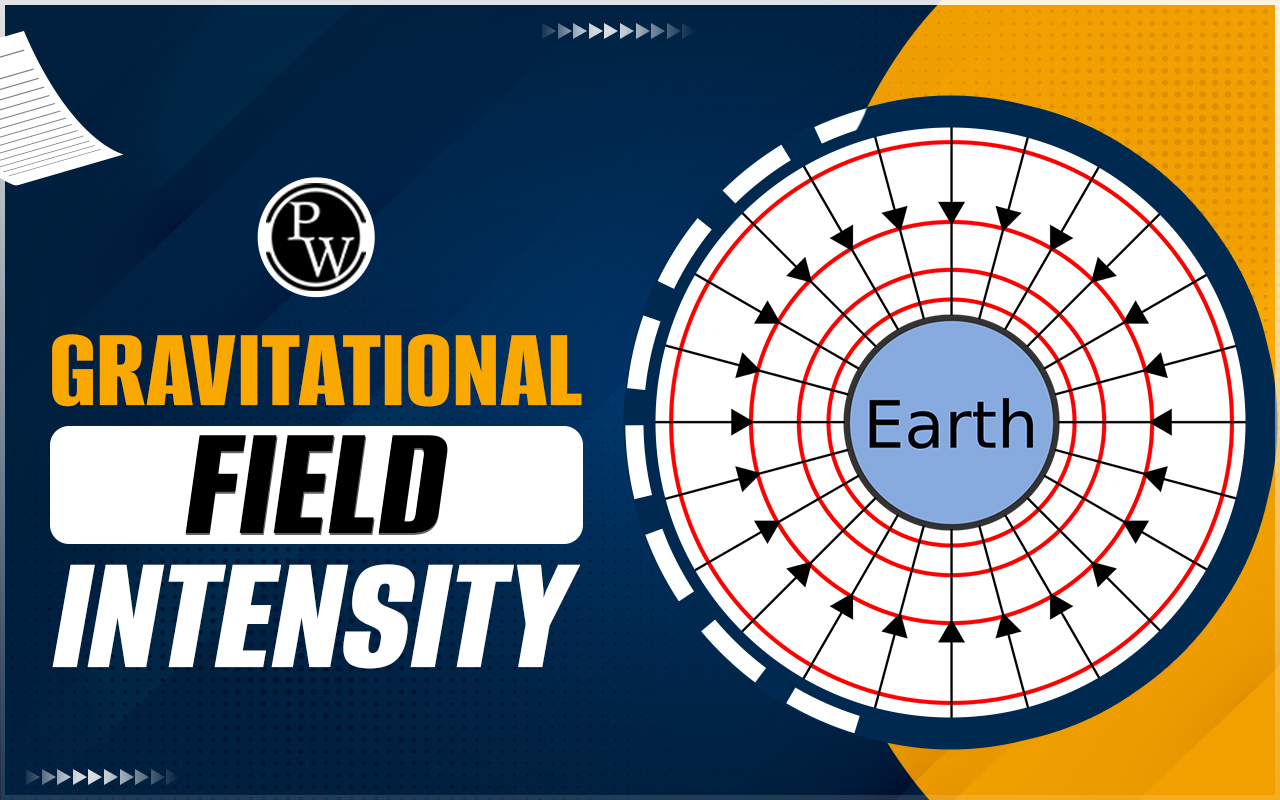

Gravitational Field and Field Strength
Gravitational Field and Field Strength : The space around a mass or system of masses in which any other test mass experiences a gravitational force is called gravitational field. When this test mass is moved from one point to another point, some work is also done by this gravitational force. Mathematically, gravitational field at any point can be defined by two physical quantities.
One is vector quantity, called gravitational field strength or intensity of gravitational field and it is denoted by E . This is related to the gravitational force (a vector quantity) experienced by test mass in gravitational field. We also sometimes called it gravitational field . The other physical quantity is gravitational potential . It is represented by V. This is related to the work done (a scalar quantity) by gravitational force in moving the test mass from one point to another point in the gravitational field.
Every mass particle is surrounded by a space within which its influence can be felt. This region or space is said to be occupied with gravitational field. Each point in the field is associated with a ( vector) force which is experienced by a unit mass placed at that point and is called the gravitational field strength. The region of space around a body in which its gravitational influence is experienced by other bodies is the gravitational field of that body
Or
The gravitational force of attraction acting on a body of unit mass at any point in the gravitational field is defined as the intensity of gravitational field at that point.
The gravitational field is also defined as the force per unit test mass
Gravitational Field Strength (E)
Gravitational Field Strength (E) : The force experienced (both in magnitude and direction) by a unit test mass placed at a point in a gravitational field is called the gravitational field strength or intensity of gravitational field at that point. We have been saying all through that a body A exerts a force of gravitation on another body B kept at a distance. This is called action at a distance viewpoint.
However, this viewpoint creates certain problems when one deals with objects separated by large distances. It is now assumed that a body can not directly interact with another body kept at a distance. The force between two objects is seen to be a two-step process. In the first step, it is assumed that the body A creates a gravitational field in the space around it. The field has its own existence and has energy and momentum.
This field has a definite direction at each point of the space and its intensity varies from point to point. In the second step, it is assumed that when a body B is placed in a gravitational field, this field exerts a force on it. The direction and the intensity of the field is defined in terms of the force it exerts on a body placed in it. We define the intensity of gravitational field E at a point by the equation
Gravitational Field Lines
Gravitational Field Lines : A gravitational field line (or a field line) is a line straight or curved such that a unit mass placed in the field of another mass would always move along this line. Field lines for an isolated mass m are radially inwards. If two masses are placed close to each other then field lines are shown in figure. Two field lines never cross each other. The direction of the field can just be found by drawing a tangent to the field line at the point of consideration.
Gravitational Field due to a Uniform Solid Sphere
Field at an External Point: - A uniform sphere may be treated as a single particle of same mass placed at its centre for calculating the gravitational field at an external point. Thus,
Field at an Internal Point: -
The gravitational field due to a uniform sphere at an internal point is proportional to the distance of the point from the centre of the sphere.
At the centre itself, it is zero and at surface it is
where R is the radius of the sphere. Thus,
for r ≤ R or
Field due to a Uniform Spherical Shell
At an External Point: - For an external point the shell may be treated as a single particle of same mass placed at its centre. Thus, at an external point the gravitational field is given by,
At an Internal Point: - The field inside a uniform spherical shell is zero.
Gravitational field Intensity FAQs
Q.1: What is Gravitational field inside a spherical shell?
Q.2: Outside a solid sphere, gravitational field vary inversely as __________ of the distance from the centre.
Q.3: Gravitational field due to a point depends on what factors?
Q.4: Define Gravitational field strength.












